
Hetty, Esther and Me
Hetty, Esther and Me was an original drama researched, written and performed by Trafford Youth Service and 15 African Caribbean girls from Stretford High School. The play was performed at Quarry Bank Mill, a working Georgian cotton mill on the outskirts of Manchester, owned by the National Trust. The play centred on connections between cotton produced by slaves and child labour in English mills, and the wider social issues of slavery and poverty during the Industrial Revolution. The story was told through the relationship between a slave girl (Hetty), a young mill worker (Esther) and a group of young women living in present-day Trafford.
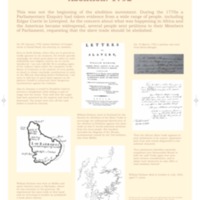
Dumfries and Galloway and the Transatlantic Slave Trade
An exhibition exploring the connections between the Scottish region of Dumfries and Galloway and the transatlantic slave trade toured Dumfries Museum, the Stewartry Museum in Kirkcudbright and Stranraer Museum. At each venue, the exhibition was accompanied by displays of material and a lecture. The catalogue of new research to supplement the exhibition by Frances Wilkins set out to correct misunderstandings about the role of people from the region in the transatlantic slave trade, to prove a history of connections independent of Glasgow or anywhere else. Evidence suggests that men from smaller towns such as Dumfries and Kirkcudbright were involved in the transatlantic slave trade as merchants, slave traders or plantation owners. For example, in the late 18th century, plantation supplies were sent from Kirkcudbright to the island of Grenada; the vessels returned with rum, sugar, and cotton wool.
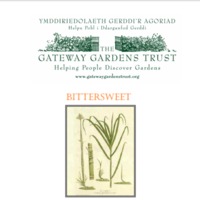
Bittersweet: Sugar, Spice, Tea and Slavery
The Bittersweet programme by the Gateway Gardens Trust involved 80 free guided garden visits over two years, around more than 30 gardens in Wales with a range of community groups, schoolchildren and lifelong learners. The themes of the visits and a mobile exhibition were the links between the slave trade and historic gardens, their makers, what they planted, Welsh abolitionists and the wider links with local communities in Wales. Historic gardens provided the starting point, looking at how everyday vegetables and fruits - beans, potatoes, tomatoes etc. - first reached the UK from the Americas. The project also looked at the history of afternoon tea, and the links between sugar, cotton and tea and slavery. The groups reflected on how many industries, grand houses and gardens were built from wealth linked to slavery, such as Cyfarthfa Ironworks in Merthyr and the expansion of the slate industry at Penrhyn Quarry. Early 18th century-style newspapers were produced, aimed at schoolchildren and adults.
Gardens involved included Cardiff’s Bute Park, Swansea’s Singleton Park, the National Botanic Garden in Carmarthen, Gwydir Castle in Llanrwst, Dyffryn Gardens, Portmeirion, Penrhyn Castle, Picton Castle, Dinefwr Park and Castle and Aberglasney Gardens.
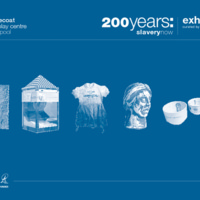
200 Years: Slavery Now
Bluecoat Display Centre is a contemporary craft and design gallery in Liverpool. The 200 Years: Slavery Now exhibition aimed to draw attention to modern slavery, both within the UK and in the wider international context. It brought together ten artists whose work reflected these concerns, and who were committed to highlighting the existence of slavery today through the creation of artefacts and the development of personal narratives. Materials used included ceramics, mixed media installations and textiles. Some of the themes covered included the exploitation of migrant workers, sex trafficking, 'sweat shop' mass production, and commemorating the Middle Passage and the workers of Manchester's cotton mills. The exhibition was curated by Professor Stephen Dixon, with the support of the Craft and Design Research Centre, MIRIAD, at Manchester Metropolitan University.
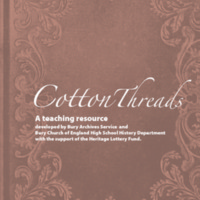
Cotton Threads
Bury Archives and Museum collaborated on an exhibition based on the journals, letters and other papers of John Hutchinson. The Hutchinson family's cotton spinning business had links to slavery in the United States: in 1848, John Hutchinson travelled to America to buy cotton produced by slaves. The exhibition at Bury Art Gallery featured archives, museum objects and paintings that put the papers into a social context. Cotton Threads went on tour to branch libraries, where talks and family workshops explored family histories and the cotton business. Volunteers assisted in conserving, cataloguing and digitising the Hutchinson papers, which were made available online. Primary school pupils took part in workshops held in the exhibition and a resource pack for secondary schools was produced with local teachers (available to download from the Cotton Threads website).
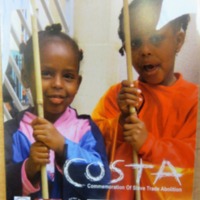
COSTA
COSTA stood for 'Commemoration of Slave Trade Abolition' and was a project of Sul'Art, a community art organisation in Bristol. Sul'Art delivered a programme of music, drama, art and dance to a number of schools and community groups to explore meanings of the bicentenary, working around themes such as migration, identity, celebration of difference, critiques of consumerism and intergenerational dialogue. Sul'Art also presented a number of performances of the professional jazz show ‘King Cotton’, dramatising the story of the cotton industry in music, song and film.
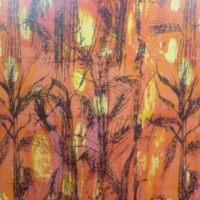
Trade and Empire: Remembering Slavery
The Whitworth Art Gallery was one of eight heritage bodies in the ‘Revealing Histories: Remembering Slavery’ partnership in Greater Manchester. The project set out to explore the history, impact and legacy of slavery on Britain through collections and community links in the North West.
'Trade and Empire: Remembering Slavery' explored the themes of trade and empire, commerce and collecting, and the impact of the experience of slavery and its legacy. Four invited artists and academics (SuAndi, Kevin Dalton-Johnson, Dr Emma Poulter and Dr Alan Rice) worked with Whitworth curators and learning staff to create the exhibition. It comprised of selections from the Whitworth's collections, contemporary works by Black artists, and objects on loan from Manchester Museum, John Rylands University Library Manchester, Bolton Museums and Archives Service and private collections. Areas of focus included a history of the Benin Bronzes, representations of Black people in British art, photographs of West Africa belonging to Tom Singleton Gardner, and printed textiles designed by Althea McNish. The exhibition was accompanied by a series of community engagement events.
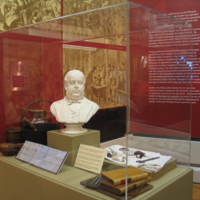
Revealing Histories: Remembering Slavery (Touchstones Rochdale)
Touchstones Rochdale was one of eight heritage bodies in the ‘Revealing Histories: Remembering Slavery’ partnership in Greater Manchester. The project set out to explore the history, impact and legacy of slavery on Britain through collections and community links in the North West.
Rochdale's connections to slavery were explored though two exhibitions at Touchstones Rochdale, which featured museum trails and family events. 'The Fight to End Slavery: A Local Story' examined the town's role in the struggle to end slavery in North America, including the work of prominent abolitionists from Lancashire. The exhibition also looked at the impact of the Lancashire cotton famine, which occurred as a result of the blockade of southern American ports during the Civil War. 'Linking Threads: Textile Industrialists and the Art Collection' focused on works given to the Rochdale Art Gallery collection by benefactors who had links to the local textile industry, such as Robert Taylor Heape and Richard Heape.
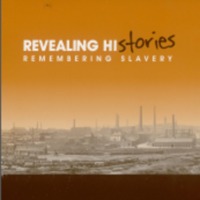
Revealing Histories: Remembering Slavery (Gallery Oldham)
Gallery Oldham was one of eight heritage bodies in the ‘Revealing Histories: Remembering Slavery’ partnership in Greater Manchester. The project set out to explore the history, impact and legacy of slavery on Britain through collections and community links in the North West.
A number of objects from Gallery Oldham's collections were identified as having links to the histories of the slave trade and slavery, focused on the themes of sugar, abolition, the American Civil War and the cotton industry. Two exhibitions also played a role in this trail. 'Cops and Bobbins', exploring Oldham's textile industry, illuminated the links with American slavery in the 19th century. 'Oldham Votes' looked at the significance of the election of 1832, during which slavery and abolition were debated. In collaboration with Touchstones Rochdale, Gallery Oldham also hosted a special day event, 'Slavery - what's it got to do with us?', featuring family activities, debate, and performances of African dance.
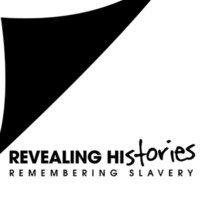
Revealing Histories: Remembering Slavery
The Revealing Histories: Remembering Slavery project sought to uncover the North West's involvement in the slave trade (and the consequent social and economic effects of this involvement) and the region's contribution to the abolition of the transatlantic slave trade and colonial slavery. Eight museums and galleries across Greater Manchester collaborated to commemorate the lasting legacies of the transatlantic slave trade. The participating venues were: Bolton Museum and Archive Service; Gallery Oldham; Manchester Art Gallery; The Manchester Museum; Museum of Science and Industry; People's History Museum; Touchstones Rochdale; and Whitworth Art Gallery. A collaborative website and a programme of exhibitions, trails, performances, films and events took a new look at the collections of these museums and galleries and the buildings in which they are housed, revealing hidden histories of the region's involvement in the slave trade. The project also examined slavery's contemporary legacy and relevance.

Revealing Histories: Remembering Slavery (Bolton Museum and Archives)
Bolton Museum and Archives was one of eight heritage bodies in the 'Revealing Histories: Remembering Slavery’ partnership in Greater Manchester. The project set out to explore the history, impact and legacy of slavery on Britain through collections and community links in the North West.
Bolton Museum and Archive Service launched a trail around its galleries to re-interpret objects on display in the context of slavery and its legacies. At the centre of the trail was Samuel Crompton's spinning mule, a machine which helped to revolutionize the British cotton industry. As part of the project, Bolton Council republished and distributed 'The Narrative of the Life of James Watkins', originally published in 1852. Watkins escaped slavery in the southern United States and travelled to Lancashire to become an anti-slavery campaigner. The museum also hosted African folk storytelling sessions, and produced a Key Stage 3 education pack, 'Chains and Cotton: Bolton’s Perspective on the Slave Trade'. A special event day, 'Facing up to the past' featured performances, poetry reading and debate.
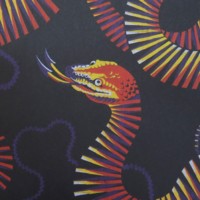
Into Africa
Into Africa was an exhibition held at the Dorman Museum in Middlesbrough, which examined the textile collaboration between Britain and West Africa after the abolition of the transatlantic slave trade. The exhibition focused on the textile samples of Christopher Dresser, the most prominent industrial product designer of the Victorian period. The samples were originally made for European markets, but increasingly became popular in West African textile trades in the late 19th century. The exhibition placed the samples in the context of African textile history, the Lancashire cotton trade and modern day exports.
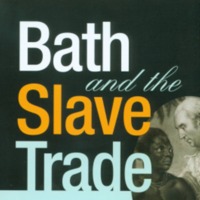
Bath and the Slave Trade
Bath Preservation Trust curated a series of exhibitions across five of their sites, with a focus on ‘unlocking the legacies of the slave trade'. Beckford’s Tower & Museum hosted Big Spenders: The Beckfords and Slavery; displays here and at the Holburne Museum were designed to explore the Beckford family connections to plantations in Jamaica, through objects, paintings and furniture. The Herschel Museum's Slaves to Fashion exhibition, and Number 1 Royal Crescent's Elegance and Exploitation trail looked at how involvement with the slave trade enhanced the luxury of 18th century life in Bath. At the Building of Bath Museum, Selina’s Web revealed the complex attitudes of Selina, Countess of Huntingdon, who sought to promote the publications of free slaves whilst also being a slave owner. A lecture series ran alongside these exhibitions.
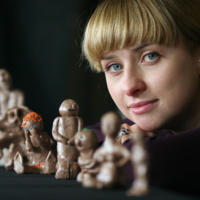
Revealing Histories: Remembering Slavery (Museum of Science and Industry)
The Museum of Science and Industry (MOSI) was one of eight heritage bodies in the ‘Revealing Histories: Remembering Slavery’ partnership in Greater Manchester. The project set out to explore the history, impact and legacy of slavery on Britain through collections and community links in the North West.
An exhibition and trail at MOSI explored the connections between Manchester’s economic success from the late eighteenth century onwards and its international trade, particularly the cotton trade with the USA, with its associated links to the transatlantic slave trade. Items identified in the collection included an American Civil War patriotic envelope from 1861, which satirised Britain's willingness to ignore the plight of American slaves. Other events included the creation of a series of terracotta figures depicting slaves on a slave ship by artist Annette Cobley. Workshop sessions to accompany this artwork were based on the theme of silence surrounding slavery.